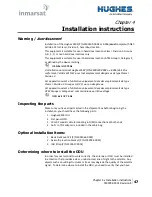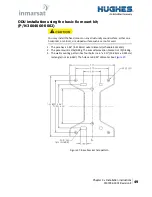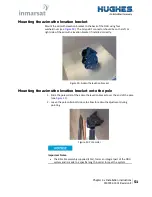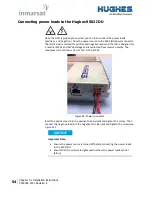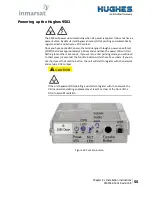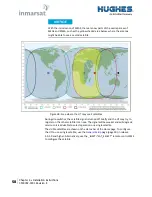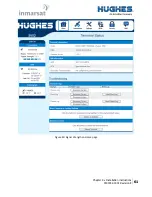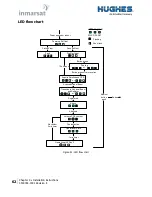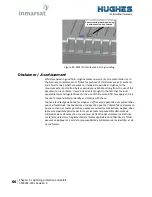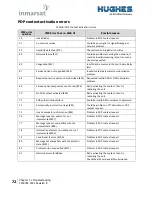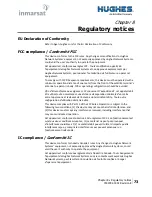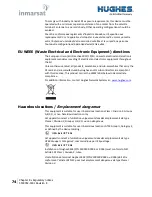
60
Chapter 4
•
Installation instructions
3500782-0001 Revision E
Pointing the ODU
Determine the azimuth and elevation for the look angle to the satellite in advance
of the installation by using the approximate latitude and longitude of the site in a
simple satellite pointing application or specially marked map. This is the preferred
mode as it simplifies the install and may be critical data for choosing the site if there
are multiple potential locations to mount the UT in wooded, mountainous or built-
up areas.
Alternatively, you can get the azimuth and elevation angle by powering up the UT,
allowing it to get a GPS fix and then checking the pointing information on the 9502
home Web UI page.
In order to speed up getting the initial GPS fix, while you are in pointing mode you
should lay the ODU flat with a clear view of the sky first so that it can see as many
GPS satellites as quickly as possible. Once you get the initial GPS fix (GPS LED solid
green), then you can point the ODU to the Inmarsat satellite.
If you short press the function button to enter pointing mode, all three LEDs start to
blink, indicating that the terminal is in pointing mode.
To aid in pointing, you can use two different methods:
1.
You can use the 3.5mm jack to connect stereo speakers or a headset in order
to hear the tones for pointing. As the signal strength increases, the tone pitch
will get higher and faster.
2.
You can also use the 3.5mm jack to connect a 3.5mm stereo plug that has two
bare wires exposed. Measure the DC voltage between the two exposed wires
with a voltmeter while you are pointing. The range is 2.5V to 3.2V and the
higher the voltage the better the antenna is pointed. A reading of 3.0V
equates to a signal level of about 51dB, so try to get as close to 3.2V as
possible.
You can also monitor the signal strength by hooking up a laptop/PC to the USB port
and monitor it from the Web UI (see
on page 61). Access the Web UI by
opening a browser and typing in the local IP address of the terminal
192.168.128.100


